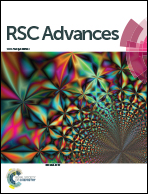Novel synthesis of core–shell urchin-like ZnO coated carbonyl iron microparticles and their magnetorheological activity
Abstract
The overall stability (thermo-oxidation, sedimentation) of MR suspensions is a crucial problem decreasing their potential applicability in real life. In this study the unique functional coating of carbonyl iron (CI) particles with ZnO structures was presented in order to develop a new MR suspension based on the core–shell ZnO/CI urchin-like dispersed particles. The two-step synthesis provides the suitable core–shell particles with improved sedimentation and also thermo-oxidation stability. Moreover, due to the enhanced sedimentation stability core–shell based suspensions exhibit higher values of the yield stress than those of bare CI based suspensions at 20 wt% particle concentration. The suspension with 60 wt% particle concentration reaches values of the yield stress around 2.2 kPa at 272 mT. The excellent MR efficiency of the core–shell ZnO/CI based suspension at elevated temperatures was observed. Finally, the dimorphic particle based suspension was prepared when the ratio between the carbonyl iron and core–shell urchin-like particles was 1 : 1. The highest yield stress was obtained in the case of a dimorphic particle-based suspension due to the good magnetic properties of the bare carbonyl iron and mechanical gripping between core–shell ZnO/CI urchin-like particles.


 Please wait while we load your content...
Please wait while we load your content...